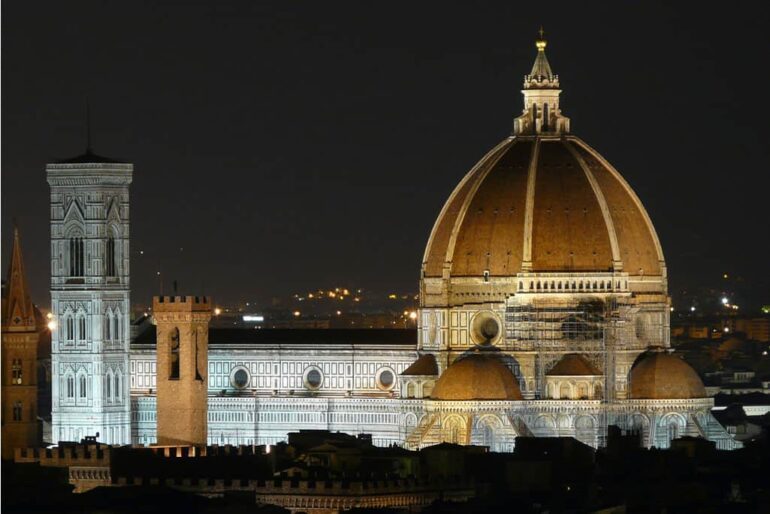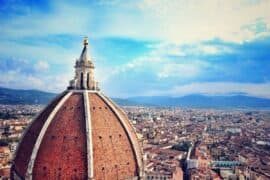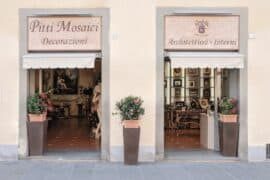The best Churches in Florence to visit
The artistic marvels found in the capital of the Italian Renaissance are endless. So unless you’re staying for quite a while, it will be difficult to have time to visit all of the beautiful basilicas, cathedrals and churches Florence has to offer. That’s why we’ve made a selection of 10 must-visit churches in Florence – in the hope that you’ll get to visit all of these churches and experience the amazing energy and uniqueness each one possesses.
Duomo di Firenze: Cathedral of Santa Maria del Fiore
Piazza del Duomo
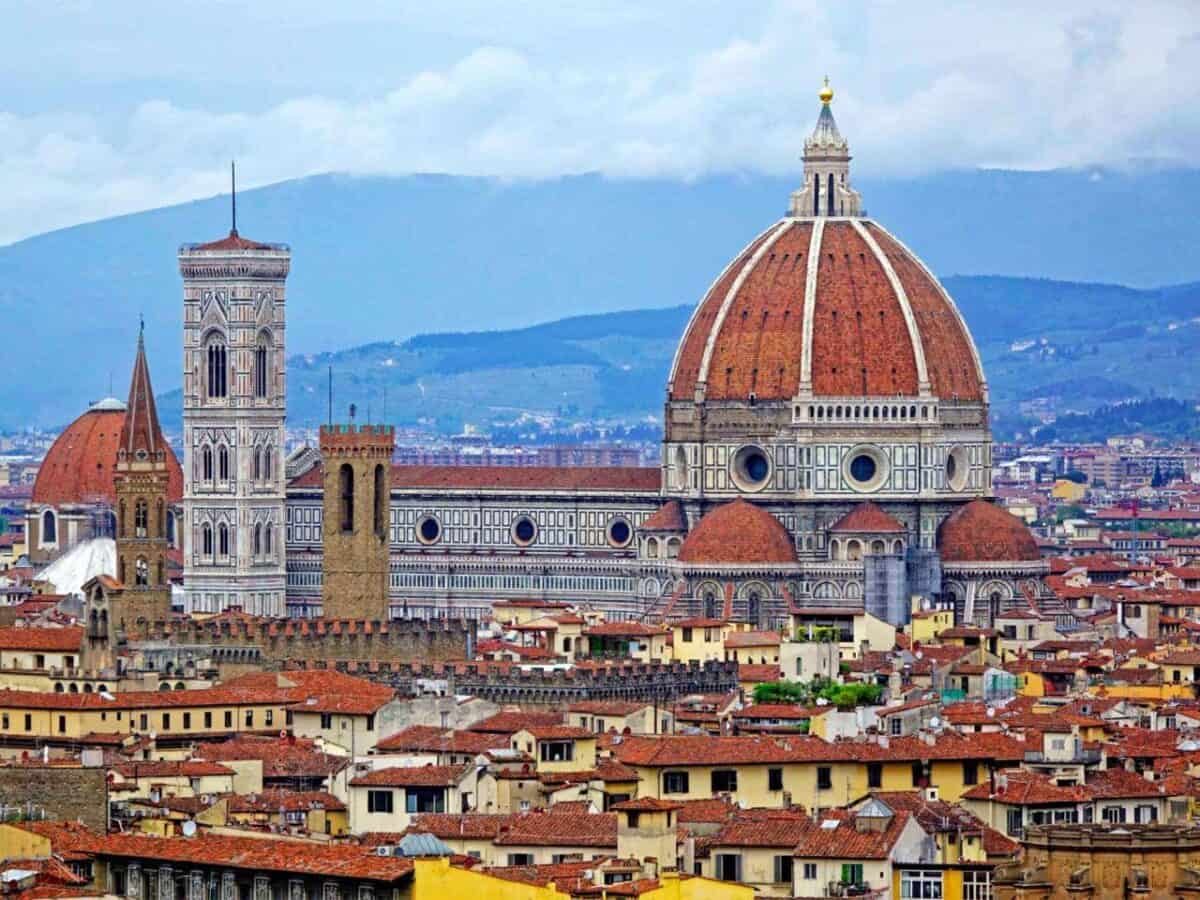
When I think of Firenze, the first thing that comes to mind is the Duomo, also known as the Cathedral of Saint Mary of the Flower. This church dominates the Tuscan capital with its giant dome, boasting a diameter of 45.5 meters, built by Filippo Brunelleschi. The dome’s frescoes were made from 1572 to 1579 by Giorgio Vasari and Federico Zuccari, and were restored along with the whole cathedral from 1978 till 1994. The cathedral, designed by Arnolfo di Cambio and consecrated by Pope Eugene IV in 1436, is the third largest church in the world and was the largest in Europe at the time of its creation in the 1400s. Apart from visiting the Duomo itself, free of charge, you can visit Brunelleschi’s dome by climbing up 463 steps.
INSPIRATION
Guide To Florence’s Piazza Del Duomo
Florence Baptistry
Piazza del Duomo

This is one of the most important monuments in Florence and it is located directly on Piazza del Duomo. In 1128 it was consecrated as the baptistry of Florence and is the most ancient religious monument in the city. The baptistry has an octagonal plan and a cupola and the exterior boasts marble all over. Do not miss out on this beautiful monument and remember to pay close attention to the details on the doors which depict scenes from St. John’s life.
The Basilica of San Lorenzo and the Medici Chapels
Piazza di San Lorenzo
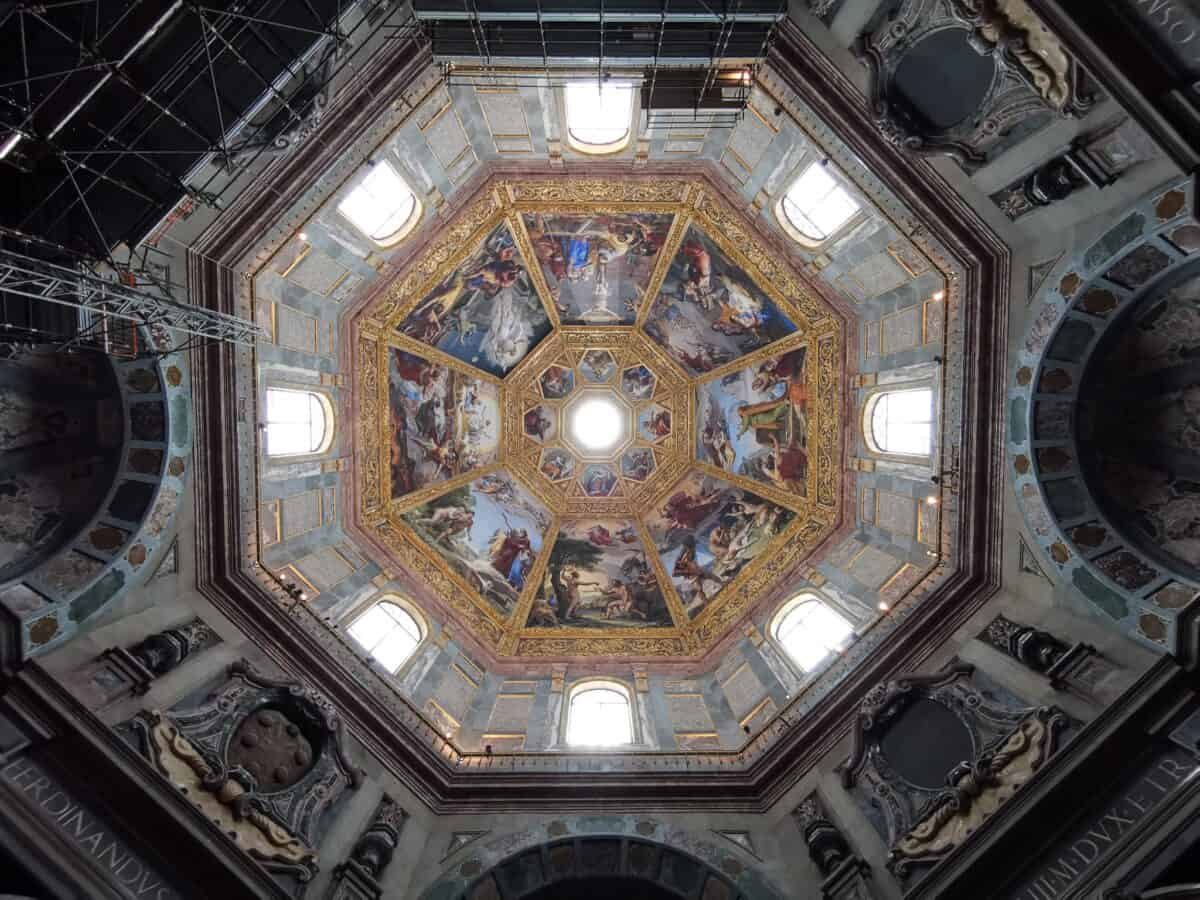
For approximately 300 years, this basilica was the Duomo of Firenze, or Cathedral of Florence, before the Cathedral of Santa Maria del Fiore became the Duomo. Since it was the church of the Medici family, it has remained one of the most important religious buildings in Florence, not to mention the basilica boasts the second largest dome in the Tuscan capital. In 1524, Michelangelo finally completed the architectural works and continued to work on the sculptures up until 1533. If you are fascinated by the story of the Medici power house, you will be captivated by this chapel. Not all of the statues were completed but among the ones that were you’ll find the statues of Lorenzo, the Duke of Urbino; Giuliano, the Duke of Nemours; the four statues of the allegories of Day and Night and more. Make sure to stop by!
Basilica of Santa Maria Novella
Piazza di Santa Maria Novella, 18
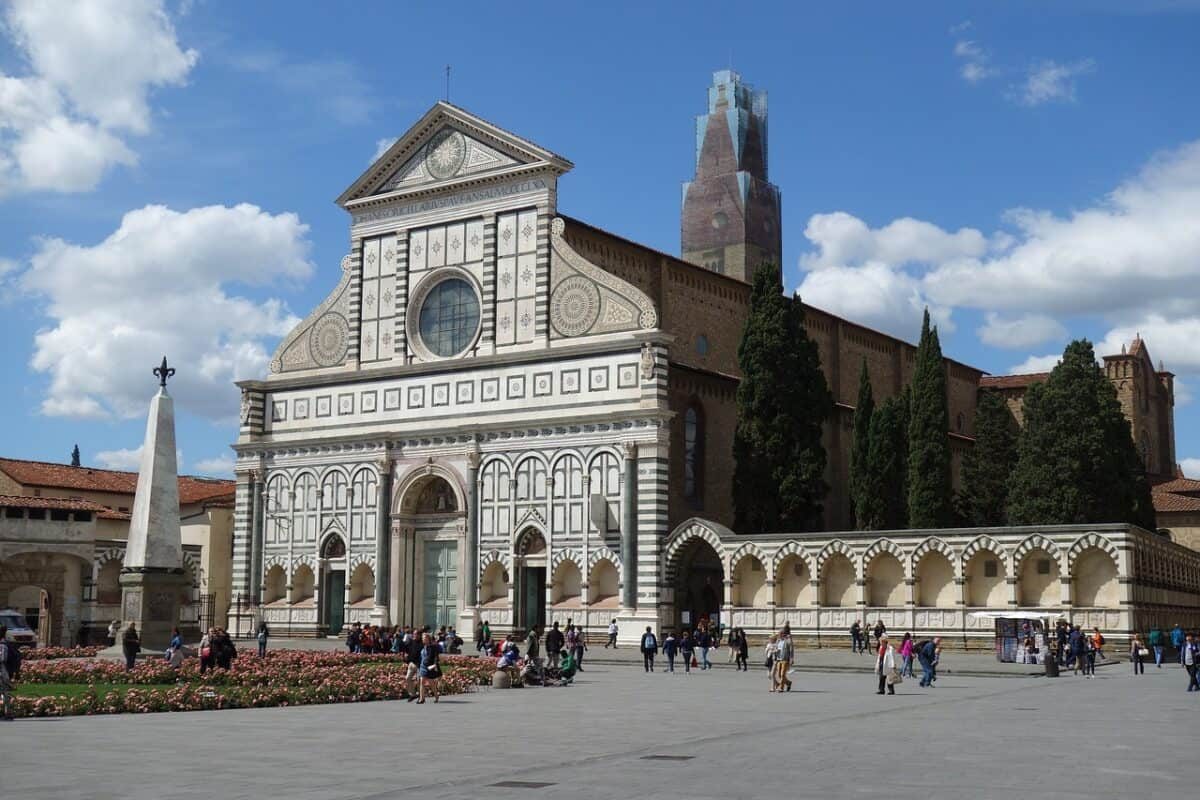
This Dominican church is one of the most important churches in Florence and one of the main gothic churches in Tuscany. Architect Leon Battista Alberti mixed Romanesque-Gothic and Renaissance style and gave it a particular shape and style. Construction began in 1246 and was only completed in the 14th century. The interior of the basilica is also a mix of styles and boasts incredible artworks including works by Giotto, Massaccio and a fresco by Ghirlandaio. Although it’s often overlooked due to its location near the train station, the Basilica of Santa Maria Novella is an absolute marvel.
INSPIRATION
Visit To The Oldest Pharmacy In The World: Santa Maria Novella
Basilica di Santo Spirito
Piazza Santo Spirito, 30
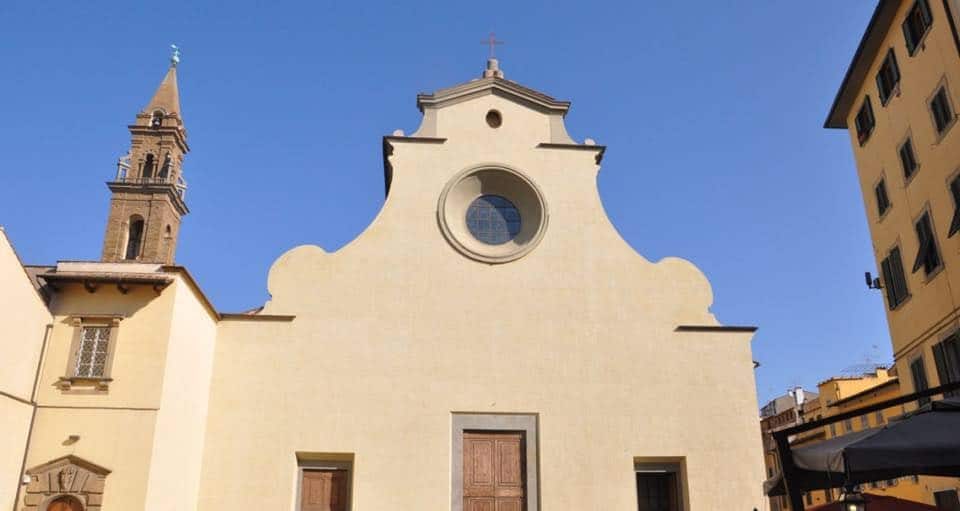
Designed by Brunelleschi, who died before he could see the completion of the 15th century Basilica di Santo Spirito, this church in the Oltrarno neighbourhood boasts a typical Renaissance interior and is known for its relatively simple structure. The church was built on top of the remains of a convent which was destroyed by a fire in 1371. The basilica has always been governed by the Friars of the Order of St. Augustine since its inauguration. Inside there are works by the most famous Florentine artists, including the wooden crucifix by the young Michelangelo.
Santa Croce
Piazza di Santa Croce

The Franciscan church of Santa Croce is known for being the resting place of many artists and scientists including Galileo Galilei, Lorenzo Ghiberti, Gioacchino Rossini, Macchiavelli and even the great Michelangelo. So it comes at no surprise that the church of Santa Croce is actually the second most famous church in Florence! In addition to being the burial grounds of some true greats, Santa Crose is also known for its stunning frescoes and for the lovely structure designed by Arnolfo di Cambio.
Basilica of Santa Maria del Carmine
Piazza del Carmine

Destroyed by a fire in 1771, the Basilica of Santa Maria del Carmine’s interior was rebuilt following the design of Giuseppe Ruggiero and completed in 1782 by Giulio Mannaioni. The foundation of the basilica dates back to the end of the 13th century – on the sides you can still admire the traces of its Gothic structure, while the stone and brick facade remain unfinished. In addition to Vasari’s Crucifixion and the vault with the ascension of Giuseppe Romei, the church of Santa Maria del Carmine owes its fame to the Brancacci Chapel, which houses frescoes by Masaccio and Masolino. In the adjacent convent, you can admire the Last Supper by Alessandro Allori, where the artist’s self-portrait appears.
San Miniato al Monte
Via delle Porte Sante
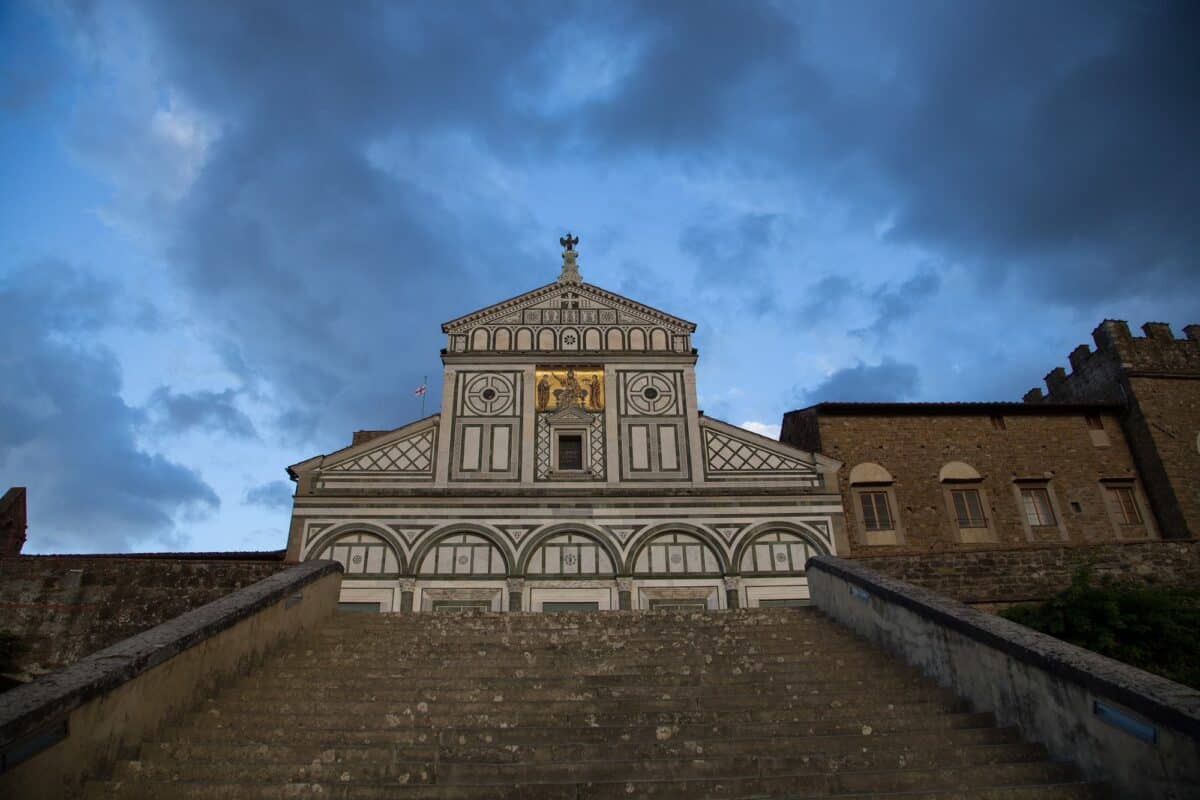
Located just above one of Florence’s best viewpoints, Piazzale Michelangelo, the church of San Miniato al Monte is one of the most beautiful in Firenze. Its green and white marble facade was the first in Florence and then copied by other churches. Still, it is different from others due to its large gold mosaics. But it’s the inside of San Miniato al Monte that will truly leave you breathless. The mosaic flooring is marvellous, with zodiac motifs; the crypt boasts frescoes by Taddeo Gaddi and the Cappella del Crocifisso by Michelozzo will leave you in awe. The church also has its own cemetery and is the burial ground of Carlo Collodi, author of Pinocchio.
Basilica of San Marco
Piazza San Marco
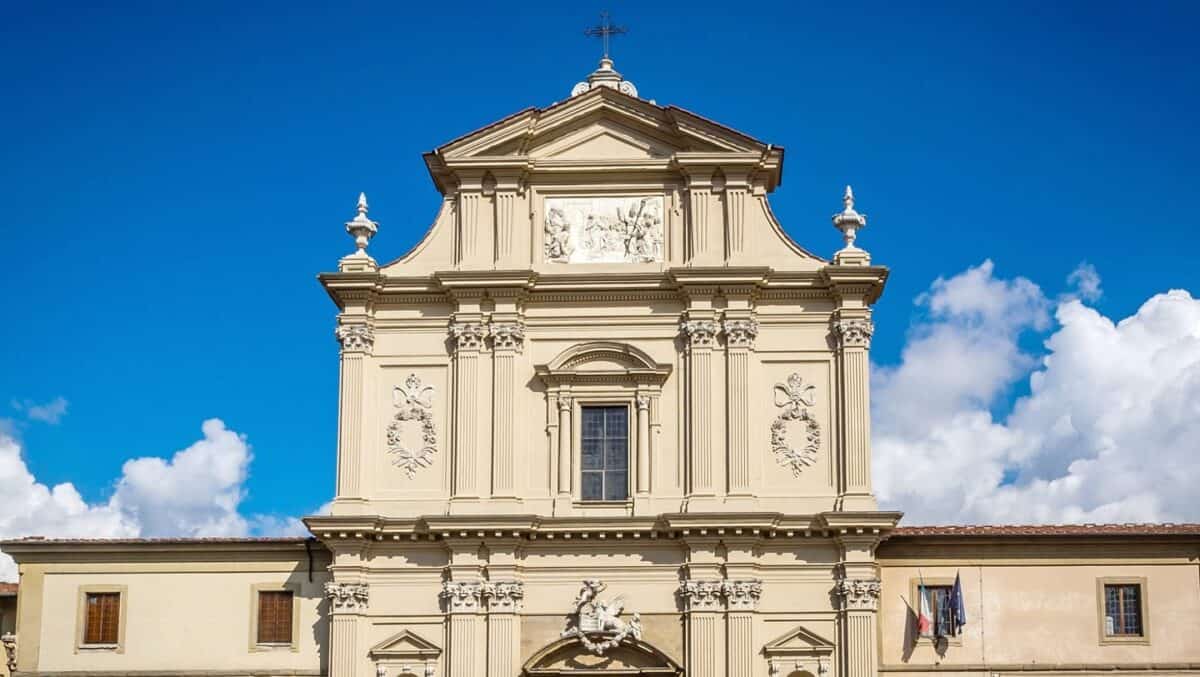
The 13th century San Marco church and monastery were almost completely reconstructed in the 15th century by architect Michelozzo. The Chapel of St. Antonio (considered the most important architectural work of Giambologna), the side altars and the Salviati Chapel were added by Giambologna in 1588. While the monastery gained traction thanks to Fra Angelico – a Dominican monk who painted the monastery rooms from 1436 to 1445. Fra Angelico’s style was unequivocal, you’ll fall in love with the frescoes representing the saints as gentle and innocent humans rather than rigid as they were depicted back in the 13th century.
The church of the St.Trinity
Piazza di Santa Trinita
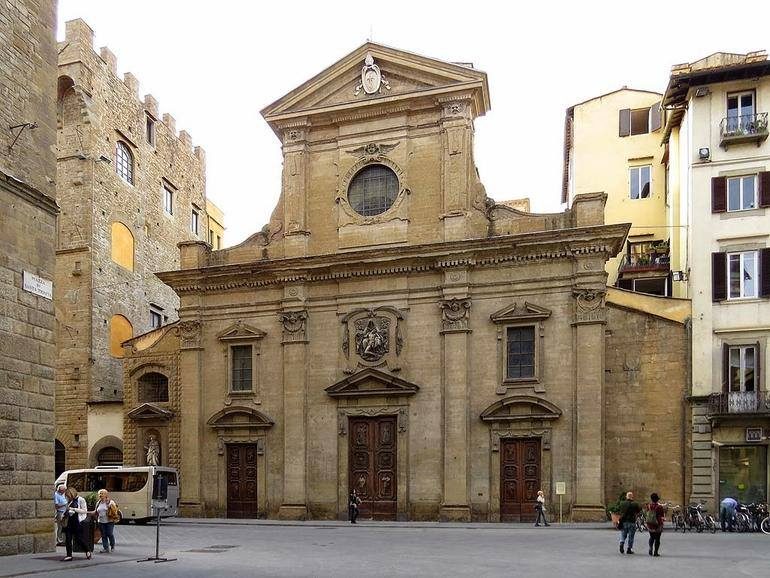
The church of the St. Trinity can be found on the square of the same name. It can be reached by walking down via de’ Tornabuoni – one of the most famous and beautiful streets in the center of Florence. This church was commissioned by Vallombrosan Benedictine Monks in the middle of the 11th century and initially built in a Romanesque style until it was later restored in Gothic Style. Definitely a must see.


